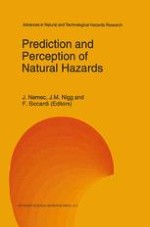This collection of articles provides a unique overview of the state of the science in the prediction of and response to natural disaster events. The uniqueness of this volume is that it comprises more than just the physical science perspective.
For each natural hazard included in this text, social scientists have provided research summaries of how public perceptions are related to the actions that are likely to be undertaken when people are confronted with information about the existence of a natural hazard threat.
In this book the reader can find a truly international characterization of both hazard perception and prediction. The American and European contributors provide state-of-the-science overviews of empirically-based research knowledge that expands beyond any national boundaries. This approach has resulted in broader understanding of what is currently known about predicting natural hazard events and predicting how those events, or warnings of them, will be responded to by different types of societies.
